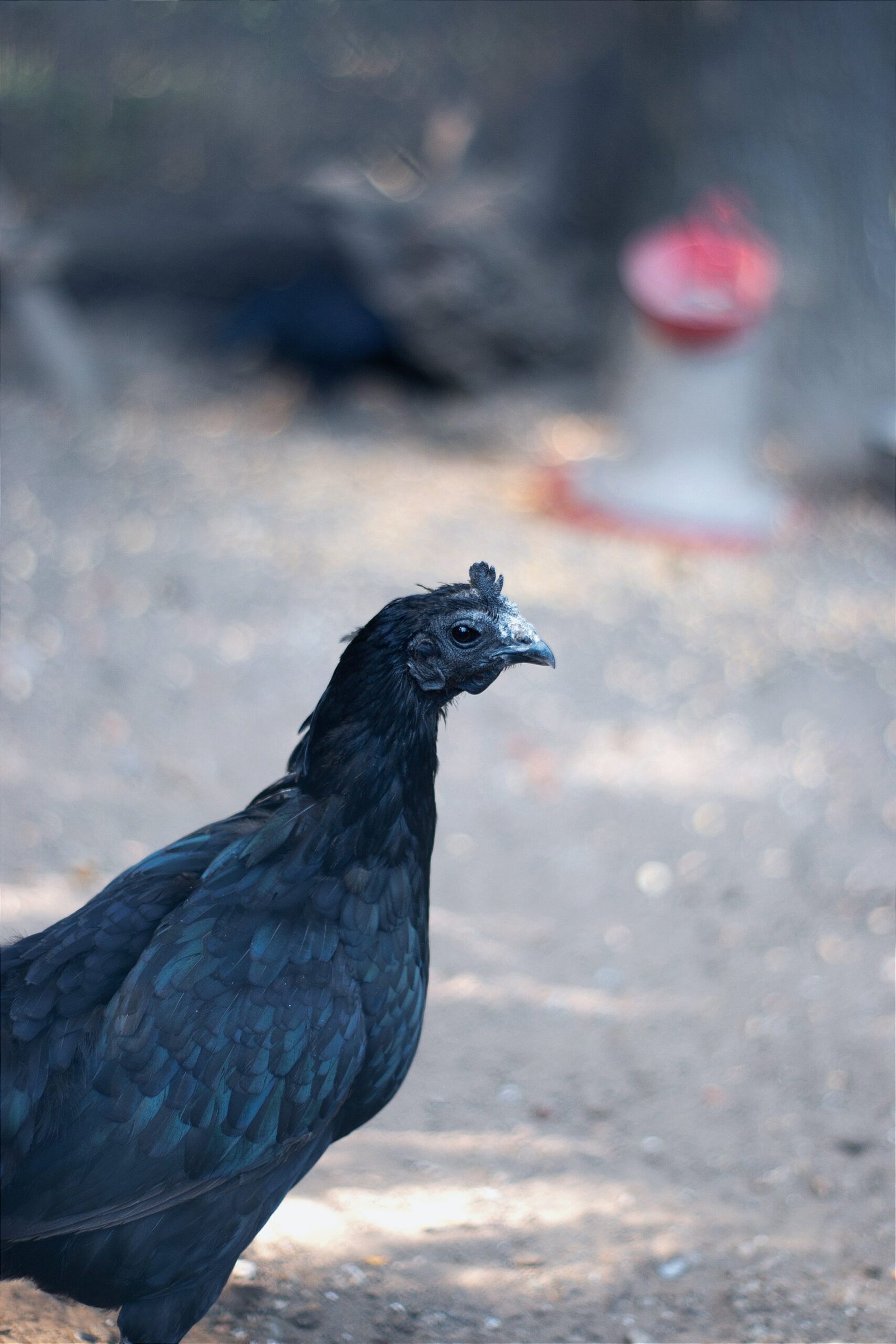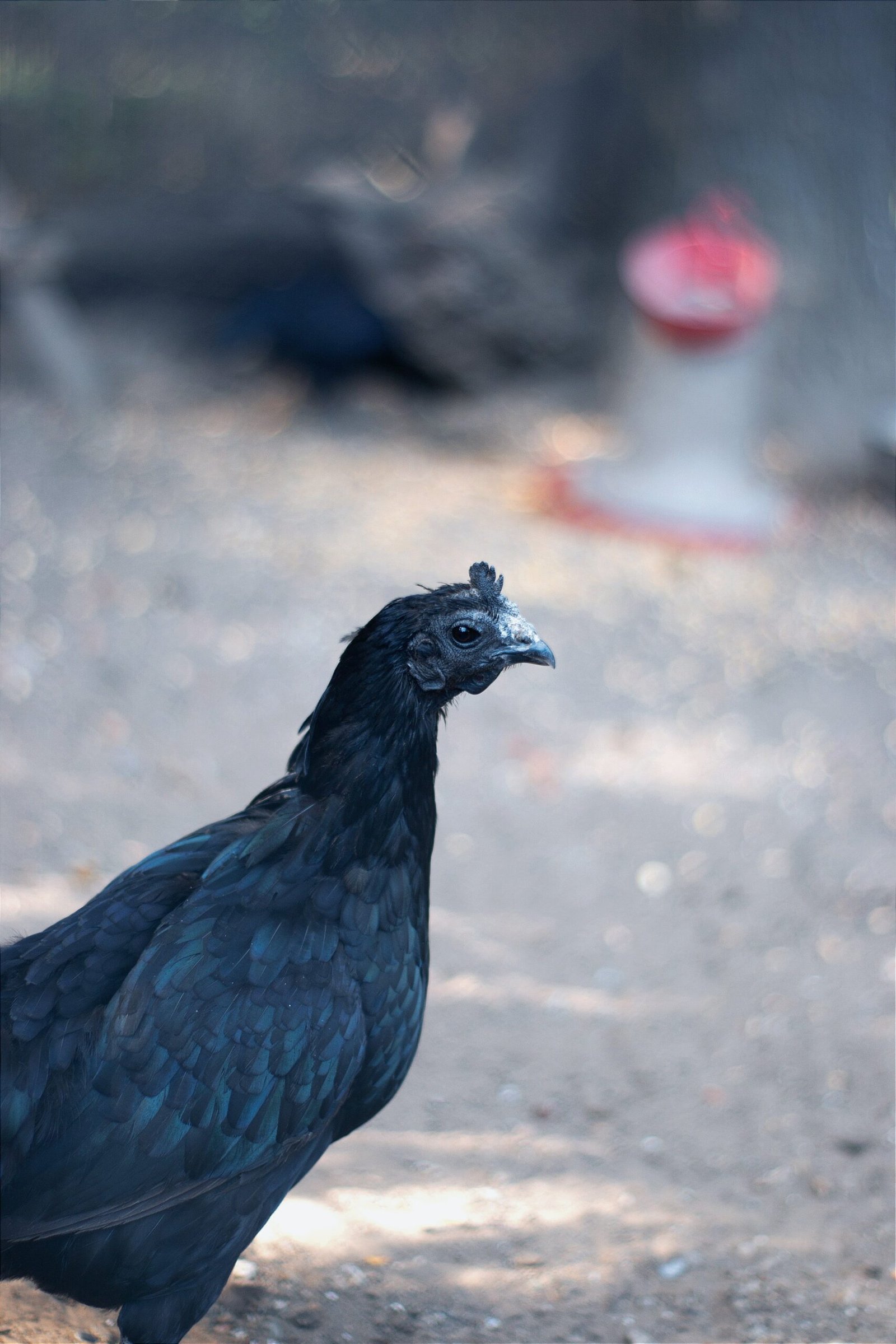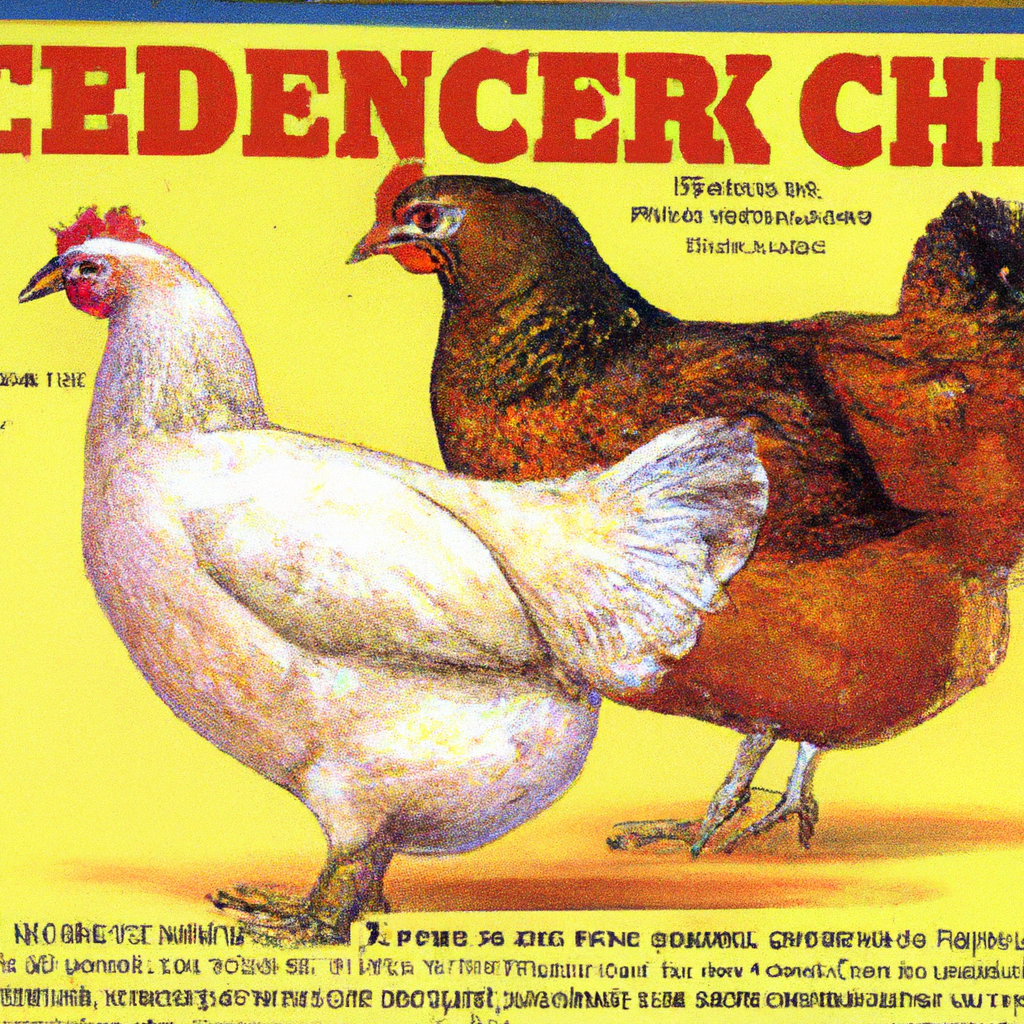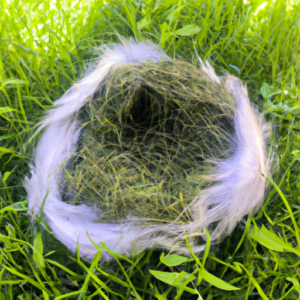
Are you considering raising chickens but feeling overwhelmed by the sheer number of breeds available? Don’t worry, you’re not alone. With so many options to choose from, finding the right breed of chickens for your needs can be a daunting task. However, by understanding your specific requirements and doing a little bit of research, you can easily narrow down your choices and find the perfect feathered friends to suit your lifestyle. Whether you’re looking for egg-laying powerhouses, friendly backyard companions, or showstoppers to wow your neighbors, this article will guide you through the process of selecting the perfect breed of chickens for your unique needs. Choosing the right breed of chickens for your specific needs requires careful consideration of several factors. It’s important to think about the climate in which you live, the space you have available, the purpose for which you want to raise chickens, the time and effort you’re willing to invest, and the availability of different breeds in your area. By taking these factors into account, you can select the ideal breed or breeds that will meet your requirements and provide you with a successful and enjoyable chicken-raising experience.
Climate
The climate in which you live plays a significant role in determining the suitability of certain breeds of chickens. Some breeds are more cold-hardy and are better equipped to handle cold winters, while others are more heat-tolerant and thrive in hot climates. If you live in an area with extreme temperatures, it’s important to choose a breed that is well adapted to your specific climate to ensure the health and well-being of your chickens.
Space
The amount of space you have available will also influence your breed selection. Larger breeds of chickens require more space to roam and forage, while smaller breeds can thrive in more confined areas. If you have limited space, it may be more practical to choose smaller breeds or consider raising chickens in a free-range setup where they have access to a larger outdoor area.
Purpose
Consider your purpose for raising chickens. Are you primarily interested in egg production, meat production, or do you simply want ornamental and show breeds? Different breeds are bred for specific purposes and exhibit varying levels of productivity in egg-laying and meat production. Identifying your primary objective will help narrow down your choices and ensure that you select a breed that aligns with your goals.
Time and Effort
Raising chickens requires time and effort, so it’s important to realistically assess how much of each you’re willing and able to invest. Some breeds are known to require more maintenance and careful management, while others are more low-maintenance and easy to care for. If you have a busy lifestyle or limited time to devote to chicken care, opting for low-maintenance breeds may be the best choice for you.
Availability
The availability of different breeds in your area is another important consideration. While certain breeds may be popular and readily available, others may be harder to find or only found through specialized breeders. Research the local availability of different breeds and consider the logistics and cost associated with obtaining the specific breeds you desire.
Now, let’s explore some popular breeds that are known for their unique characteristics and suitability for various purposes.

Popular Breeds
Rhode Island Red
The Rhode Island Red is a versatile breed that is popular for both egg production and meat. They are known for their remarkable ability to lay large, brown eggs, making them a favorite among backyard chicken enthusiasts. Rhode Island Reds are also hardy and adaptable, making them suitable for different climates.
Leghorn
For those looking to maximize egg production, Leghorns are an excellent choice. These birds are known for their efficiency in laying large, white eggs consistently. Leghorns are a relatively smaller breed that requires less space, making them ideal for backyard flocks.
Plymouth Rock
Plymouth Rocks are renowned for their dual-purpose nature, excelling in both egg production and meat. They are hardy and dependable, making them a popular choice among beginners and experienced chicken keepers alike. These birds are also known for their docile and friendly temperament.
Silkie
Silkies are distinctive with their fluffy plumage, feathered feet, and friendly demeanor. They make excellent ornamental and show birds due to their unique appearance. While they are not prolific egg layers, Silkies are known for their broodiness and make great mothers when given the opportunity to hatch and raise chicks.
Sussex
Sussex chickens are well-loved for their versatility and amiable nature. They are known for their high egg production, with some varieties capable of laying over 250 eggs per year. Sussex chickens are also hardy and adaptable to various climates, which makes them a popular choice among backyard chicken enthusiasts.
When it comes to egg production, there are different categories of breeds to consider: high egg producers, dual-purpose breeds, and broody breeds.
Egg Production
High Egg Producers
High egg producers are breeds that are specifically bred for their exceptional egg-laying capabilities. These breeds are known to lay a large number of eggs consistently throughout the year. Rhode Island Reds, Leghorns, and some varieties of Sussex chickens are examples of high egg producers.
Dual-purpose Breeds
Dual-purpose breeds are known for their ability to produce a substantial number of eggs while also possessing sufficient meat quality. These breeds offer a balance between egg production and meat yield. Plymouth Rocks are a notable example of dual-purpose breeds, excelling in both egg production and meat quality.
Broody Breeds
Broody breeds are ideal if you’re interested in allowing your hens to exhibit natural maternal instincts and hatch their own chicks. These breeds are known for their broodiness, or tendency to go broody and sit on eggs to incubate and raise them. Silkies are a well-known broody breed, and their gentle temperament makes them excellent mothers.
In addition to egg production, some people choose to raise chickens for their meat production. Different breeds are bred specifically for meat production and exhibit unique characteristics in this regard.

Meat Production
Broilers
Broiler chickens are specifically raised for meat production. These birds reach butcher weight quickly, typically within 6 to 8 weeks. They are bred to have a high meat-to-bone ratio and can provide a significant yield of meat. Broilers often have accelerated growth rates and require specific management practices to ensure their health and welfare.
Cornish Cross
The Cornish Cross is a popular breed for meat production due to its rapid growth and excellent meat yield. These chickens reach market weight quickly, typically within 7 to 9 weeks. They have a broad breast and tender meat, making them a preferred choice for many meat producers.
Freedom Rangers
Freedom Rangers are an alternative breed for meat production that grows at a more moderate rate compared to broilers. They require a longer growing period, usually around 11 to 12 weeks, compared to broilers. While they may not reach the same size as broilers, Freedom Rangers are known for their flavorful meat and ability to forage efficiently.
Jersey Giants
Jersey Giants are a large, dual-purpose breed that is popular for both meat and egg production. While they may not reach the same growth rate as broilers, they are known for their large size and substantial meat yield. Jersey Giants require a longer growing period compared to broilers, typically reaching butcher weight around 14 to 16 weeks.
Some people choose to raise chickens for purely ornamental purposes or for showcasing in poultry shows. These breeds are valued for their unique appearances and graceful characteristics.
Ornamental and Show Breeds
Silkie
Silkies are highly sought after for their stunning appearance and distinctive traits. They have a fluffy plumage that feels like silk, feathered feet, and a friendly disposition. Silkies come in a variety of colors, including black, white, blue, buff, and splash. Their ornamental value and unique appearance make them a favorite among chicken enthusiasts for showcasing in poultry shows.
Cochin
Cochins are known for their large size, full plumage, and calm temperament. They have an abundance of soft feathers that give them a fluffy and rounded appearance. Cochins come in various color varieties, including black, white, buff, partridge, and blue. Their stunning appearance and elegant demeanor make them a popular choice for ornamental purposes and poultry shows.
Sebright
Sebright chickens are cherished for their petite size and intricate laced plumage patterns. They have unique feature of having laced feathers, meaning their feathers are edged with a contrasting color. Sebrights come in silver and gold varieties, with each variety exhibiting its own distinctive beauty. Due to their striking appearance, Sebrights are often showcased in poultry shows.
Polish
Polish chickens are instantly recognizable for their flamboyant crests of feathers on their heads. These crests form a showy topknot that gives them a distinct look. Polish chickens come in various colors, including white, black, buff, and silver. Their eye-catching appearance and charismatic personality make them a popular choice for both ornamental purposes and poultry shows.
In addition to considering the breed’s purpose, appearance, and show value, it’s crucial to choose a breed that can adapt to the specific climate in which you live.

Climate Adaptability
Cold-hardy Breeds
If you live in an area with cold winters, choosing a cold-hardy breed is essential to ensure the well-being and comfort of your chickens. Some breeds, such as Rhode Island Reds, Plymouth Rocks, and Sussex, are known for their ability to tolerate colder temperatures and handle harsh winter conditions.
Heat-tolerant Breeds
For those who live in hot climates, selecting heat-tolerant breeds is crucial to prevent heat stress and maintain the health of your flock. Breeds like Leghorns and certain varieties of Sussex chickens are known for their heat tolerance and ability to thrive in warm environments.
Moderate Climate Breeds
If you live in an area with moderate temperatures year-round, you have the flexibility to choose from a wide range of breeds that are adaptable to various climates. Some breeds, such as Rhode Island Reds and Plymouth Rocks, are known for their ability to thrive in different climates and are suitable for moderate climate conditions.
When it comes to the space requirements for raising chickens, the size of the breed plays a significant role.
Space Requirements
Large Breeds
Larger breeds of chickens require more space to roam, forage, and carry out their natural behaviors. If you have ample space available, you can consider raising larger breeds such as Jersey Giants or Cochins. These breeds benefit from having a larger outdoor area to explore and enjoy their surroundings.
Small Breeds
If you have limited space or plan to keep chickens in a smaller backyard setting, choosing smaller breeds is more practical. Bantam varieties of larger breeds or specific small breeds such as Silkies and Sebrights are ideal for those with limited space. They require less room to roam and can thrive in more confined areas.
Free-range vs. Confined
Consider whether you plan to keep your chickens in a free-range setup or in a more confined space, such as a chicken coop or run. Free-ranging chickens have access to a larger outdoor area and can forage and explore more extensively. However, free-ranging may not be feasible for everyone due to safety concerns or local regulations. Confined chickens can still be kept in a comfortable and secure environment, provided that their space meets their specific needs.
The temperament and manageability of different breeds can greatly influence your chicken-raising experience.

Temperament and Manageability
Friendly Breeds
If you’re looking for chickens that are easy to handle and enjoy human interaction, choosing friendly breeds is important. Some breeds, such as Rhode Island Reds and Sussex chickens, are known for their friendly demeanor and can be more easily tamed and handled.
Docile Breeds
Docile breeds are well-suited for individuals who prefer calm and gentle chickens. Cochin and Polish chickens are examples of docile breeds, known for their calm temperament and easygoing nature. These breeds are less likely to exhibit aggressive behavior and can be more manageable, especially for beginners.
Active Breeds
On the other hand, if you prefer chickens that are active and enjoy exploring their environment, there are breeds that exhibit more liveliness and energy. Leghorns and Silkies are known for their active nature and can provide entertainment with their energetic antics.
Consider the time and effort you’re willing to invest in chicken care, as different breeds have varying maintenance requirements.
Time and Effort
Low-maintenance Breeds
If you have a busy lifestyle or limited time to dedicate to chicken care, choosing low-maintenance breeds is practical. Some breeds, such as Leghorns and Rhode Island Reds, are known for their hardiness and ability to thrive with minimal intervention. They require less attention and management compared to breeds that are more high-maintenance.
High-maintenance Breeds
Certain breeds may require more careful management and attention to maintain their health and well-being. Broilers, for example, have specific dietary and growth requirements that need to be closely monitored. Breeds like Silkies may require extra care due to their unique feathering and potential susceptibility to external parasites. High-maintenance breeds may be more suitable for experienced chicken keepers who are willing to invest the necessary time and effort.
Training
Training chickens can be an enjoyable and rewarding aspect of chicken keeping. Some breeds are known to be more trainable and responsive to human interaction. If you’re interested in training your chickens, breeds such as Leghorns and Rhode Island Reds are generally more receptive to training and can learn various tricks and commands.
Finally, consider the availability and cost of different breeds in your region.
Availability and Cost
Local Availability
When selecting a breed, consider the local availability of the breed in your area. Some breeds may be more common and readily available, while others may be harder to find or only accessible through specialized breeders. Research local hatcheries, poultry suppliers, or breeders to find out which breeds are available in your region.
Cost Considerations
The cost of acquiring and maintaining chickens is an important factor to consider. Different breeds may vary in price, with rare or exotic breeds typically being more expensive. Additionally, the ongoing costs of feed, shelter, and medical care should be taken into account when determining the affordability of a particular breed.
Rare Breeds
If you’re interested in raising rare or heritage breeds, be prepared for the potential challenges associated with obtaining and maintaining these breeds. Rare breeds may have limited availability, and the cost can be higher due to their uniqueness and conservation value. Consider the commitment and responsibility required to ensure the preservation of rare and endangered breeds before making your decision.
In conclusion, choosing the right breed of chickens for your needs requires careful consideration of multiple factors. By considering the climate, space availability, purpose for raising chickens, time and effort you’re willing to invest, and the availability and cost of different breeds, you can select the breed or breeds that will best meet your requirements.
Remember to think about the specific characteristics and traits of each breed, such as their egg-laying or meat-producing capabilities, ornamental value, adaptability to your climate, space requirements, temperament, manageability, maintenance needs, and cost considerations. By taking all of these factors into account, you can make an informed decision and embark on a rewarding chicken-raising journey that suits your specific needs and preferences.







